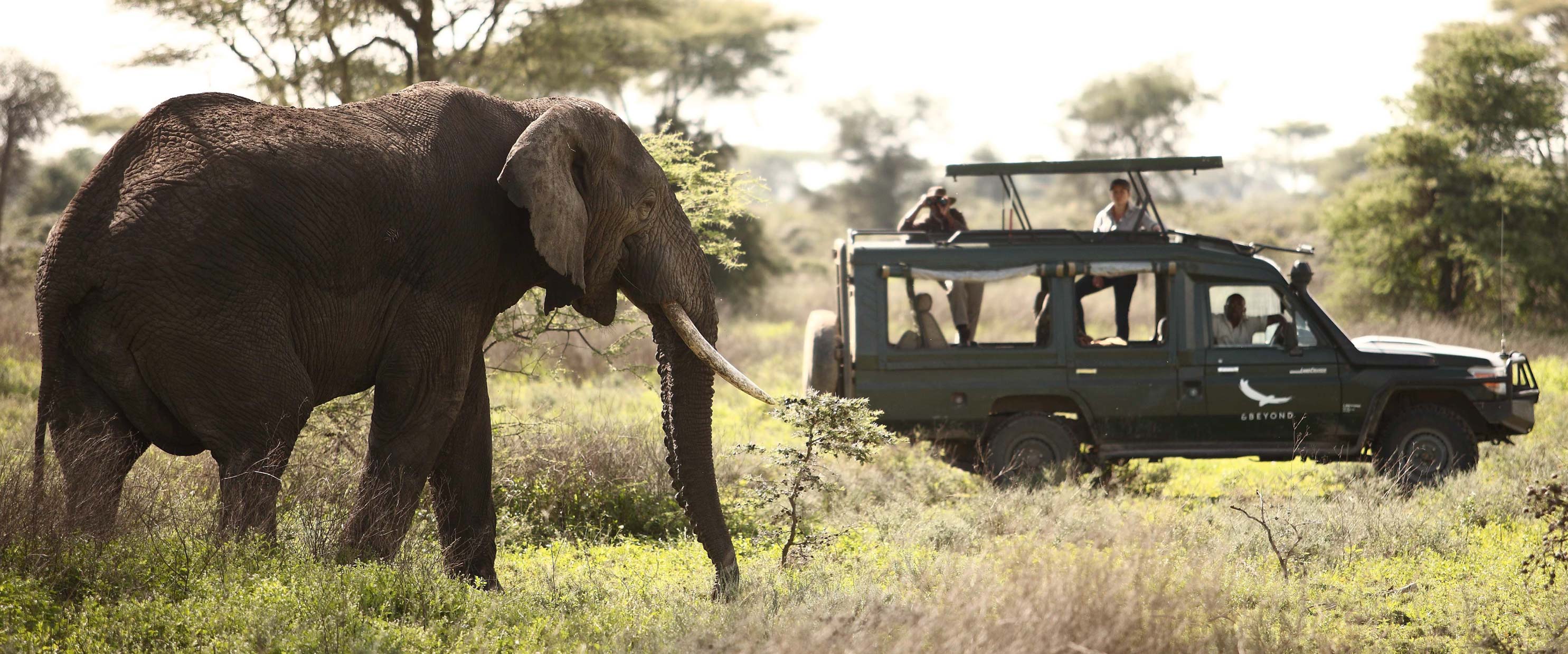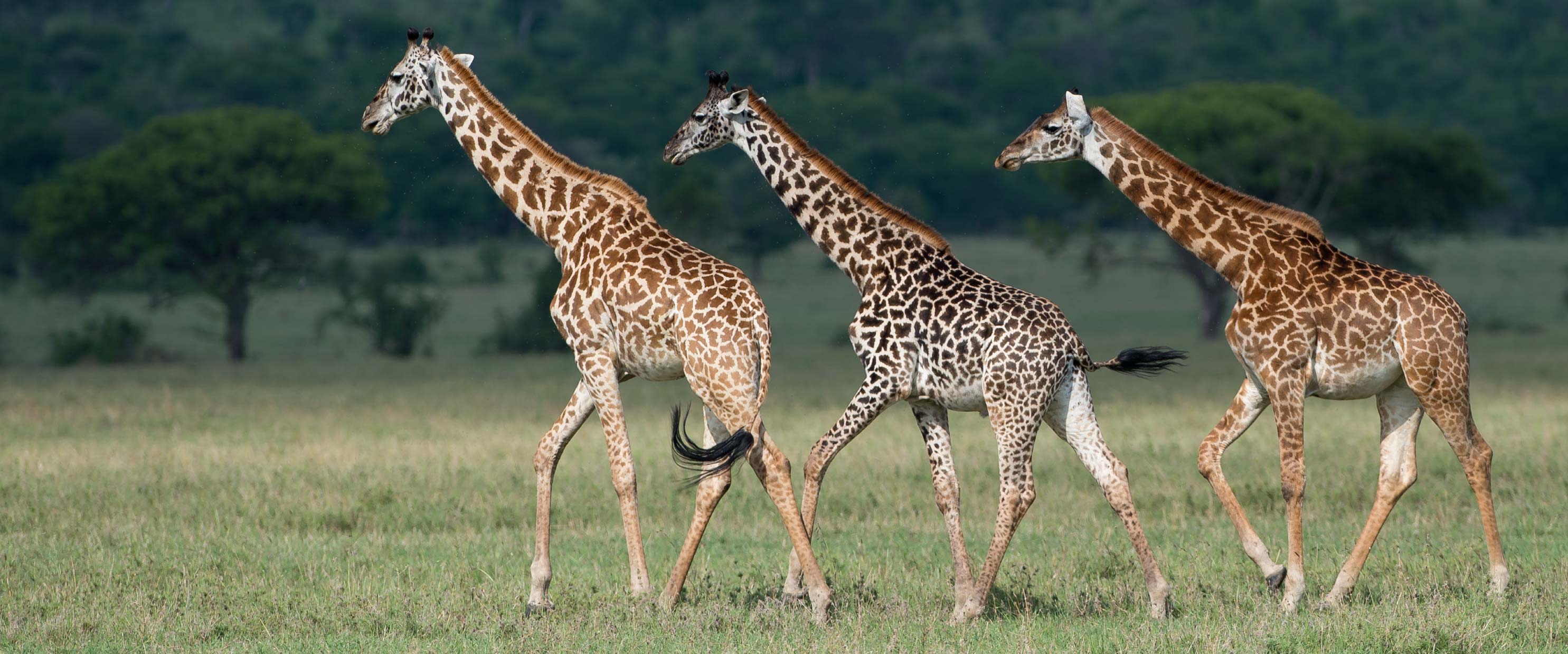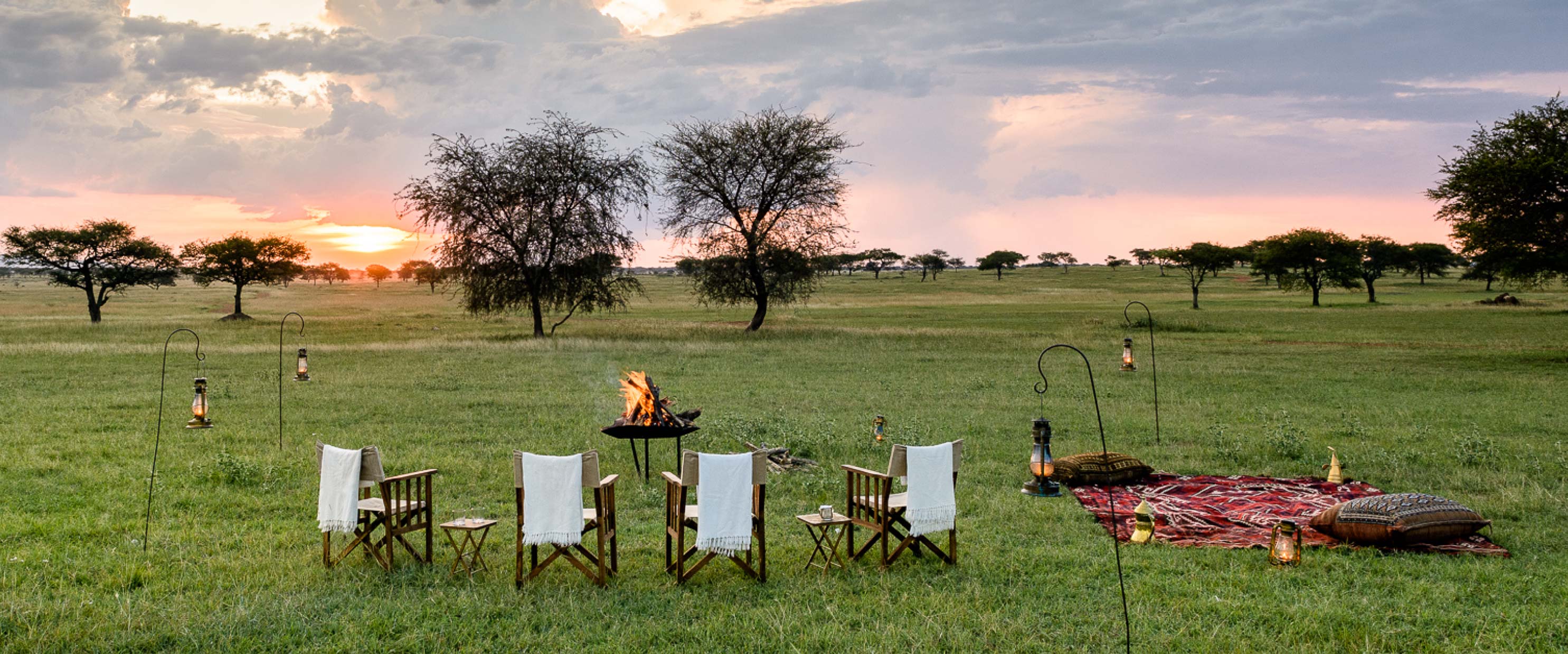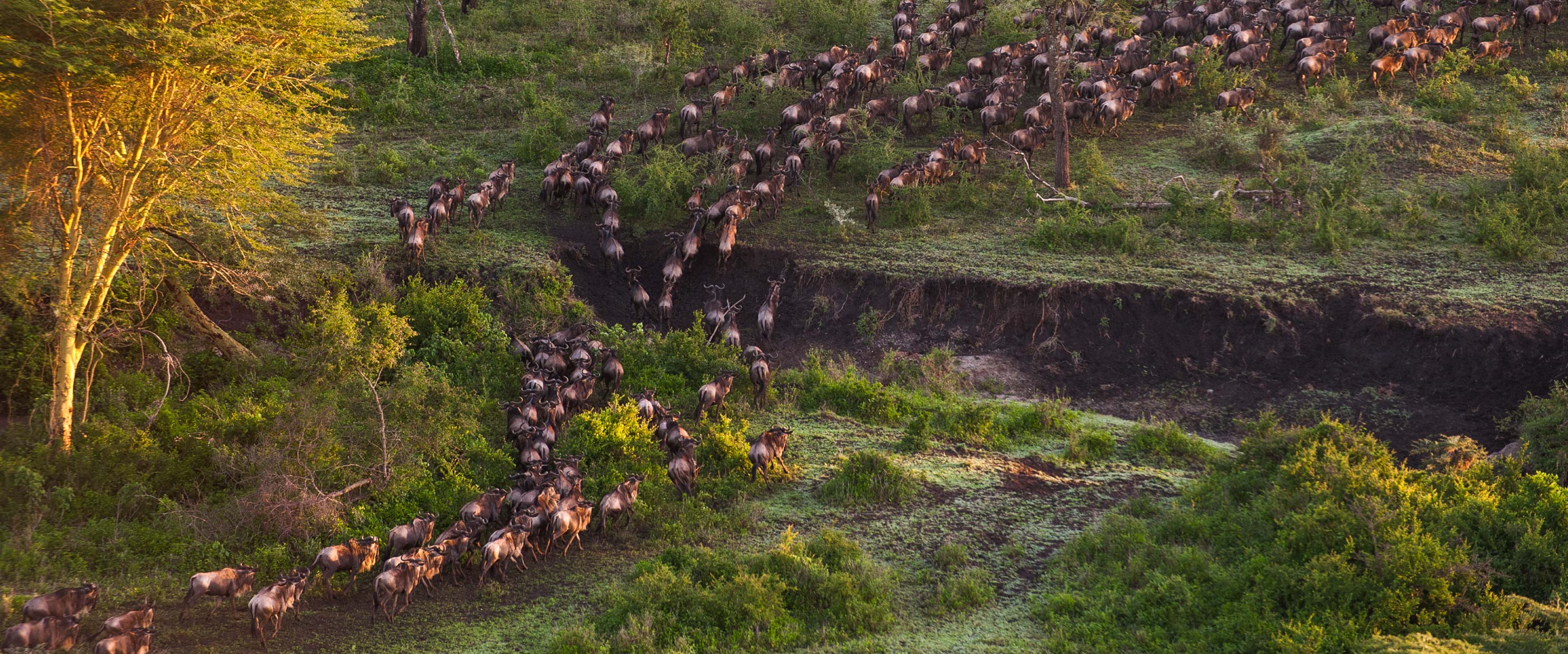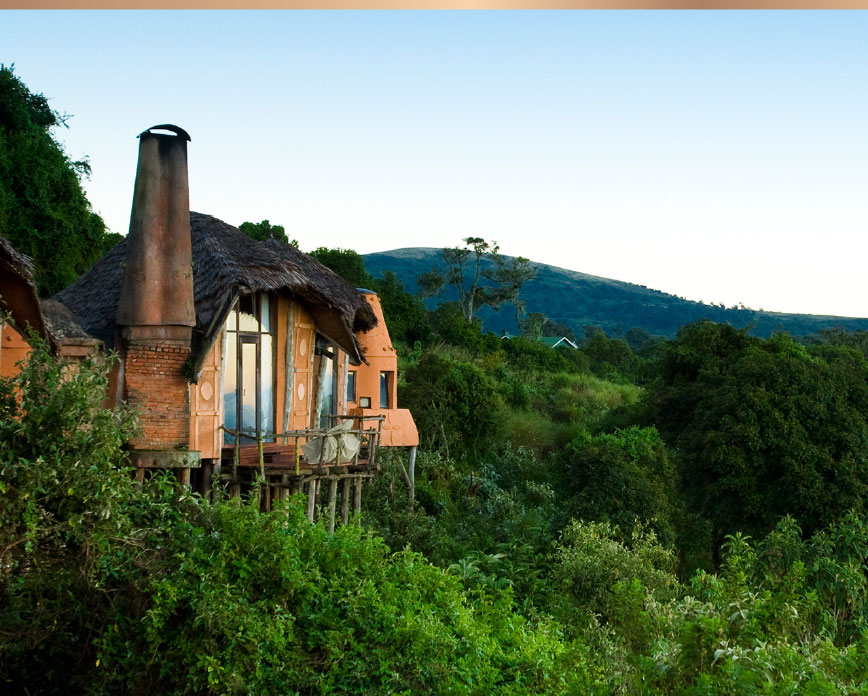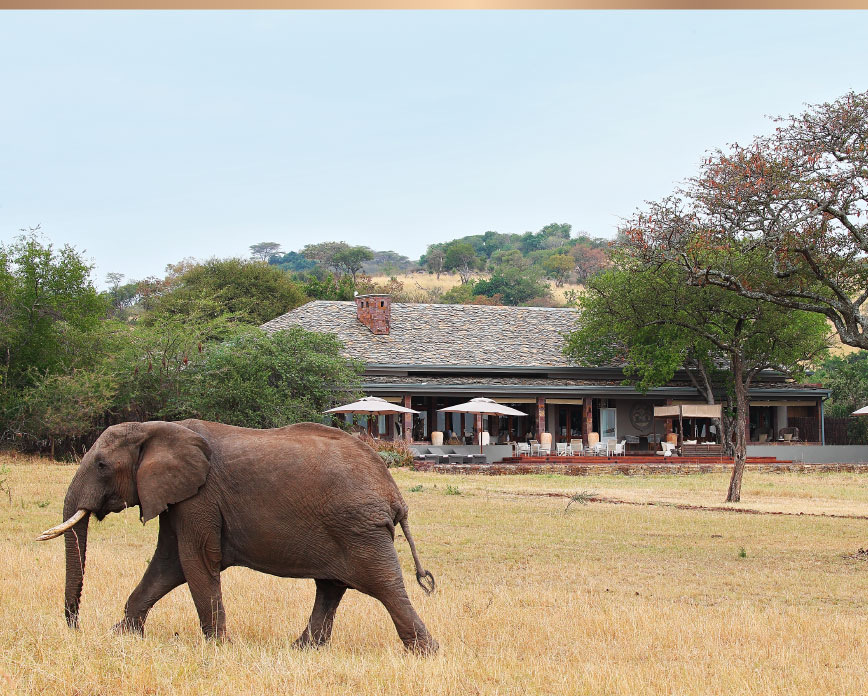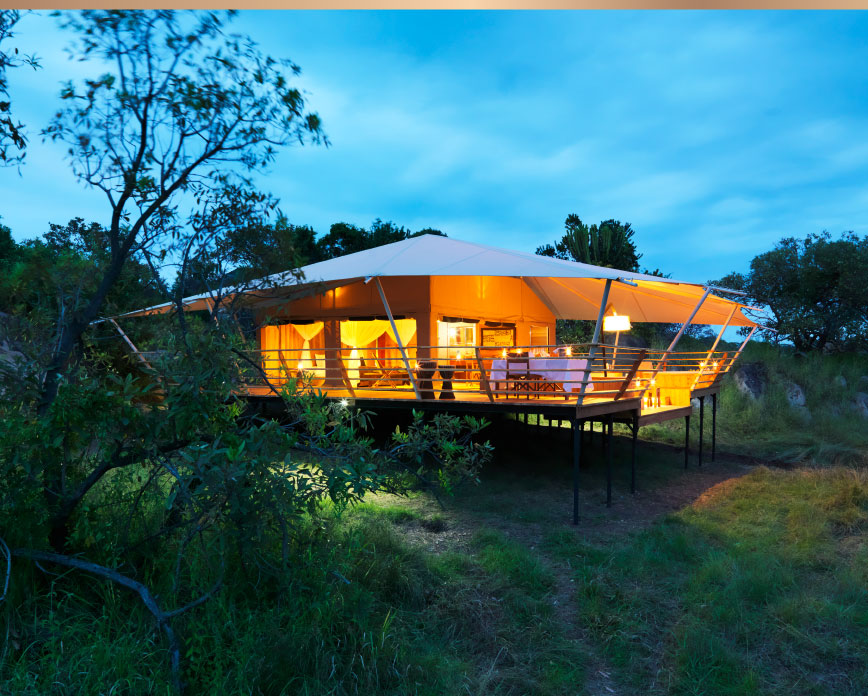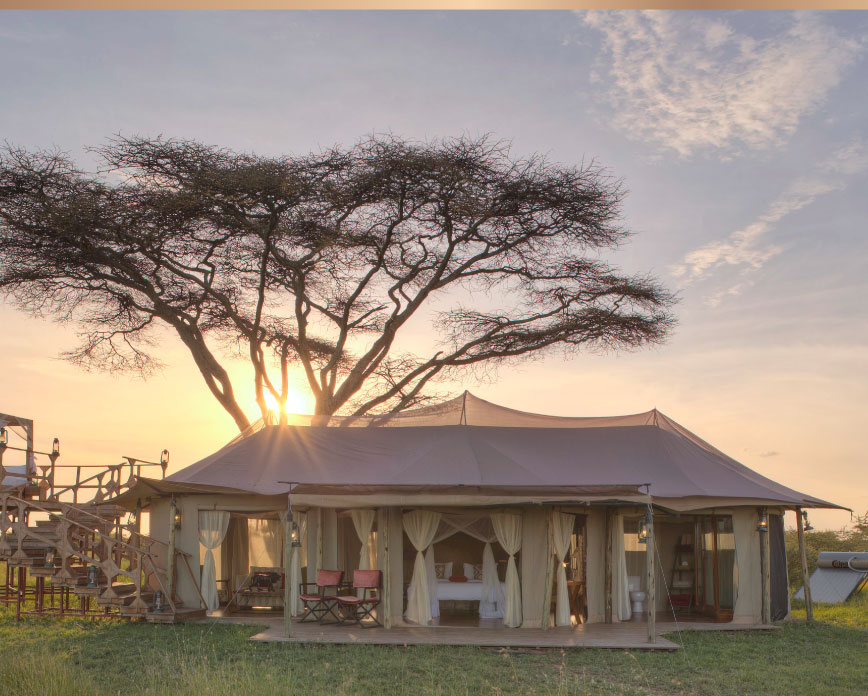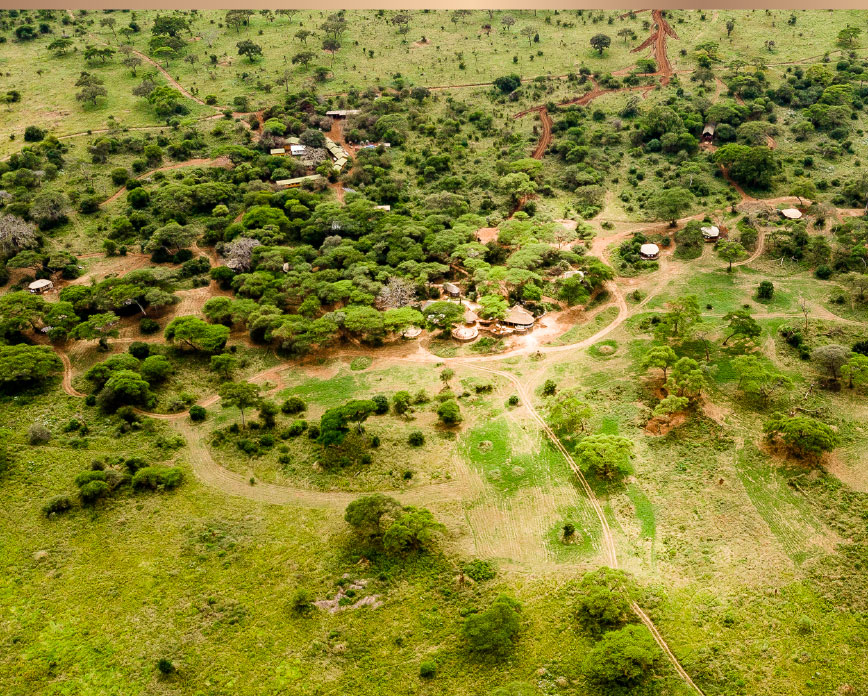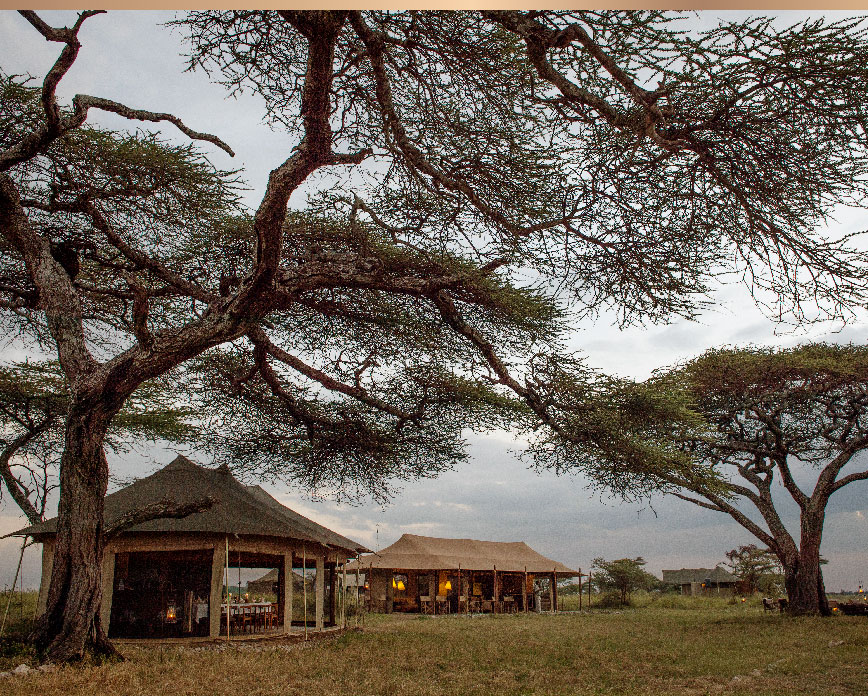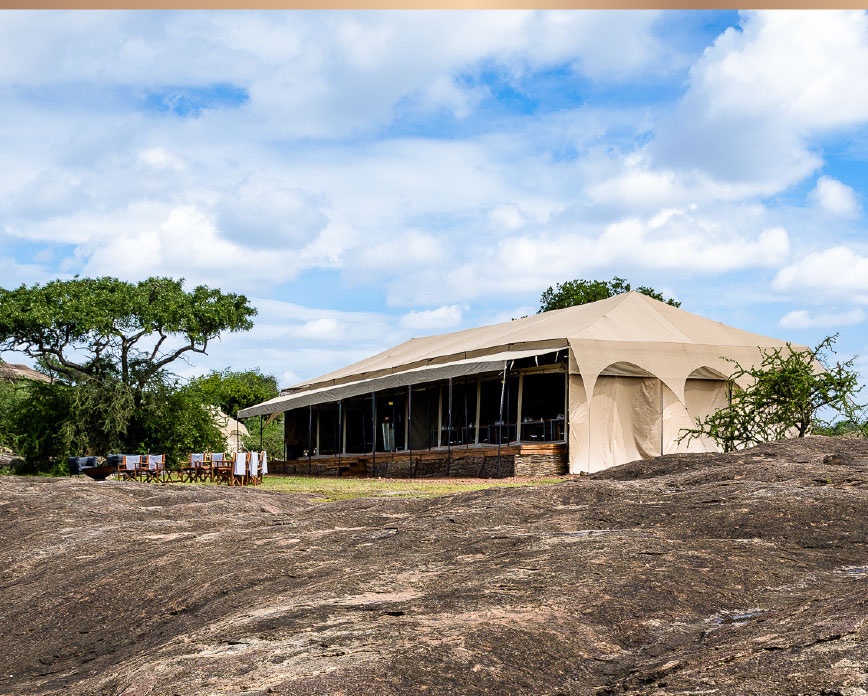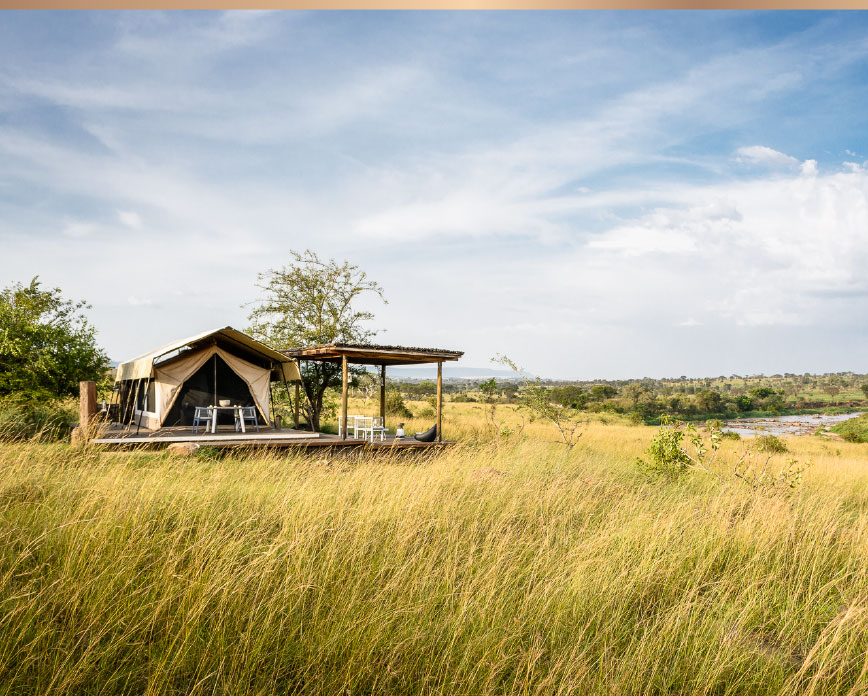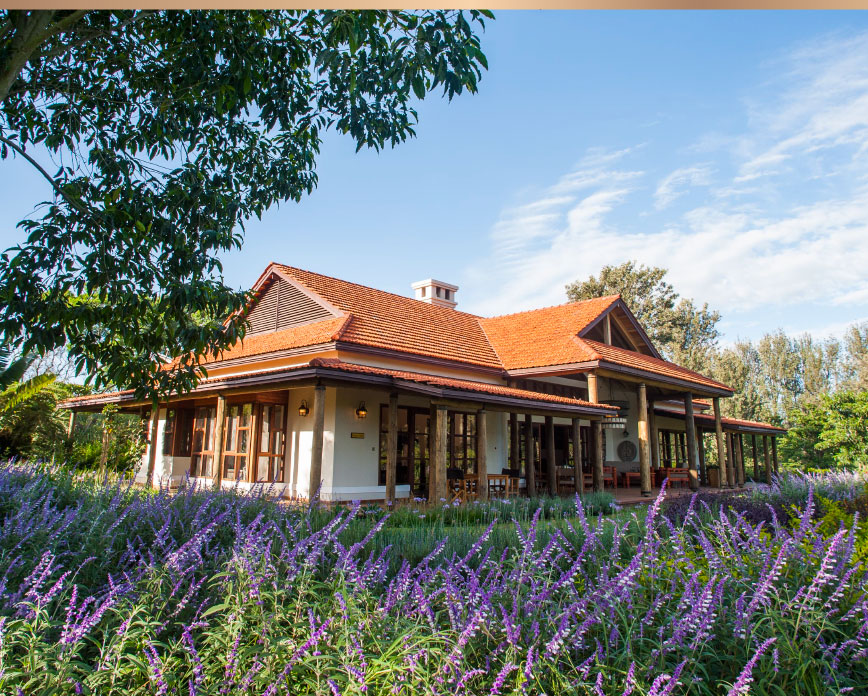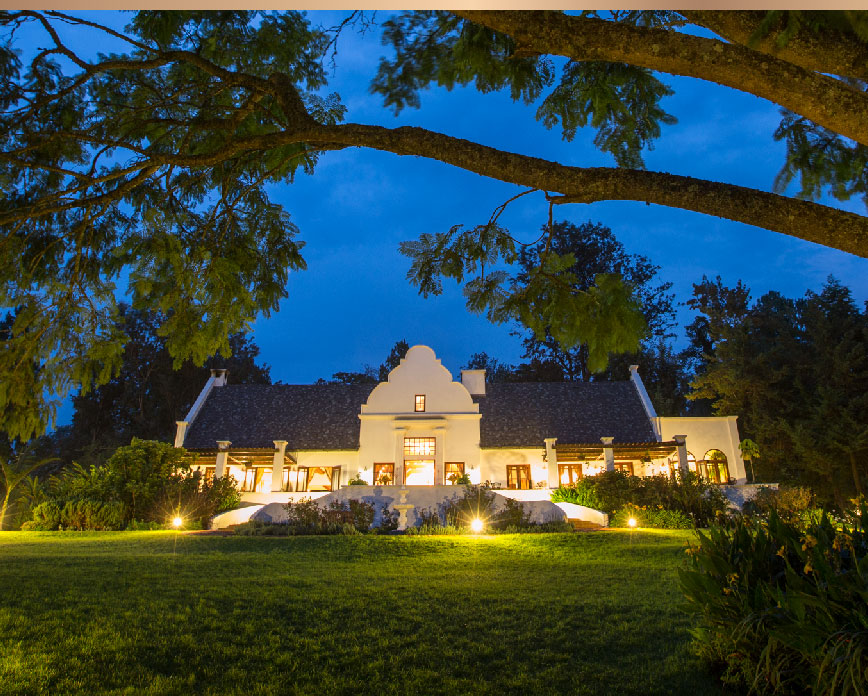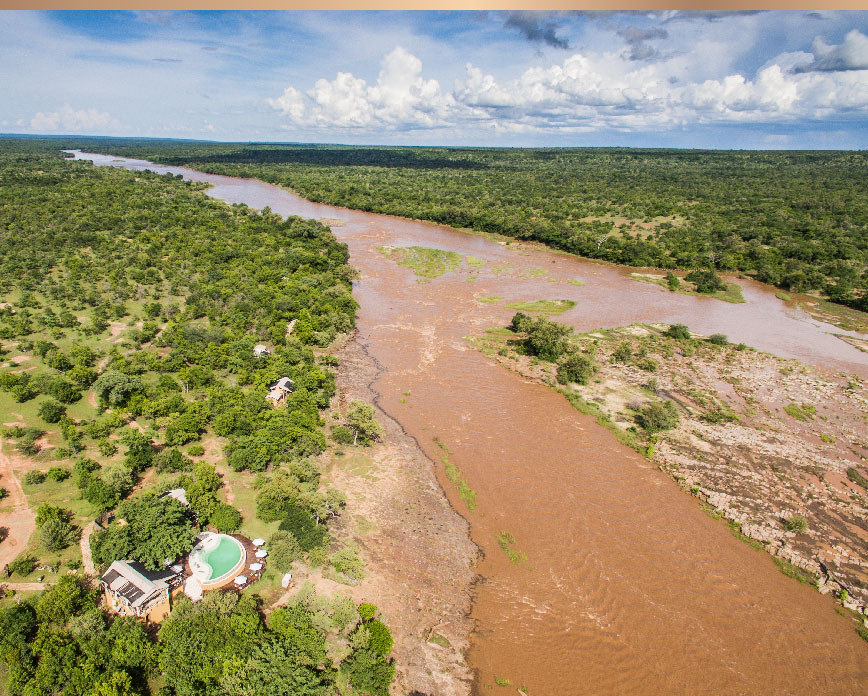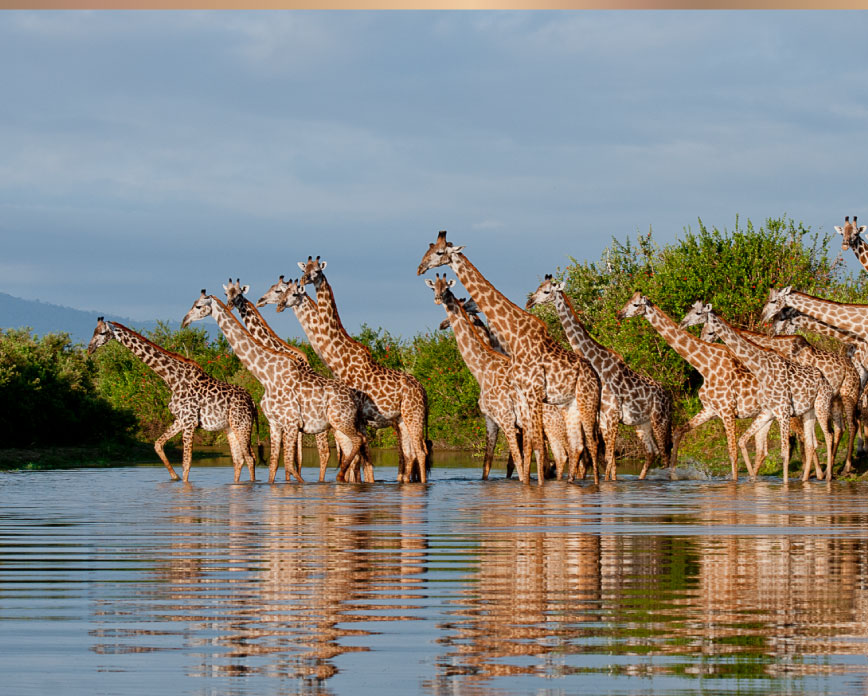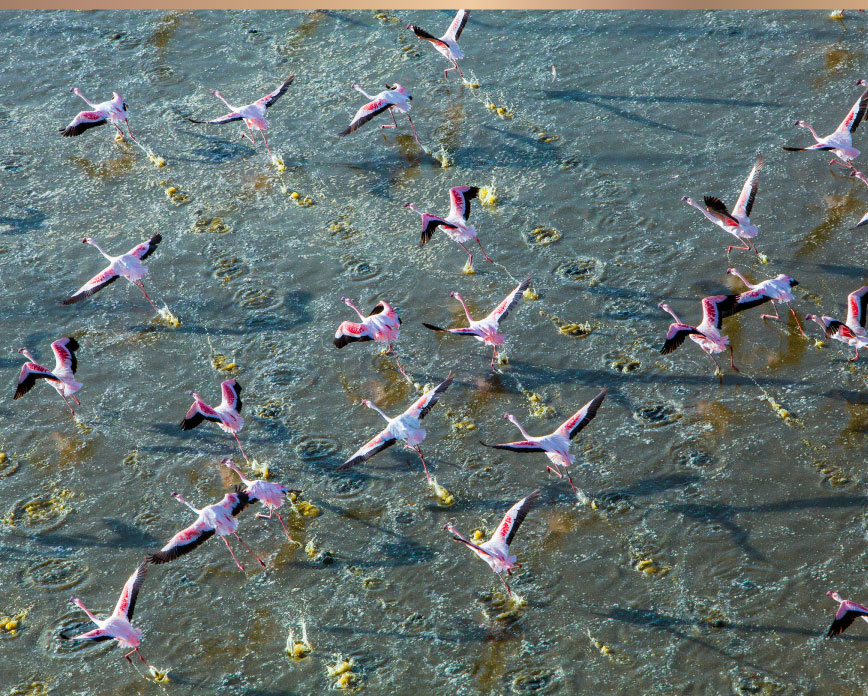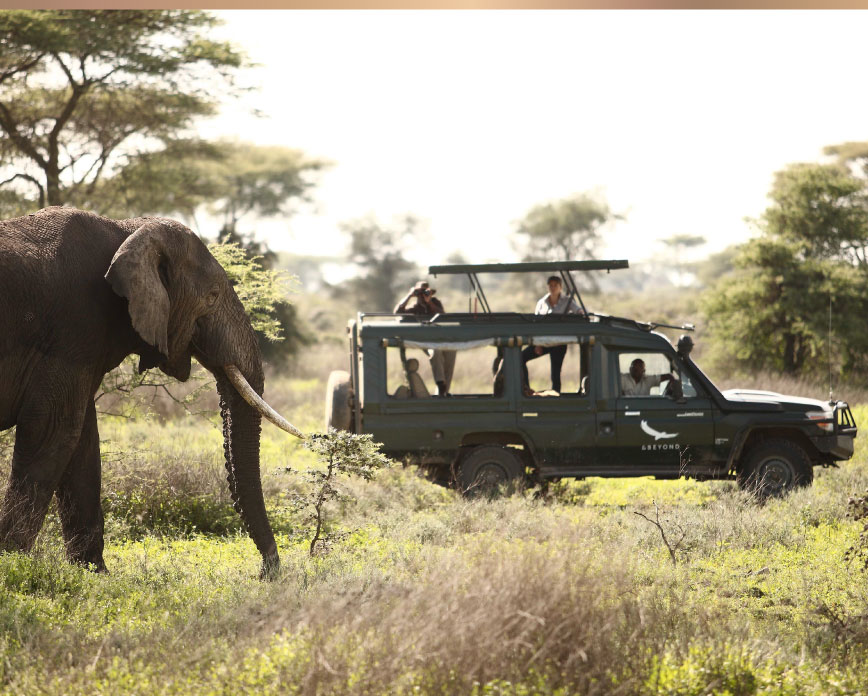THE WORLD-FAMOUS, GREAT WILDEBEEST MIGRATION IS A NATURAL, ANNUAL PHENOMENON THAT UNFOLDS IN A UNESCO WORLD HERITAGE SITE. THAT SITE IS THE SERENGETI NATIONAL PARK, ONE OF THE MOST FAMOUS PARKS IN AFRICA AND TANZANIA’S OLDEST. IT IS THE EPITOME OF CLASSIC AFRICAN SCENERY AND THE PERFECT SETTING FOR PHOTOGRAPHERS AND FILMMAKERS.
The animals typically move around in a clockwork motion from December to June in Tanzania before over two million wildebeest, zebras and gazelles cross the Mara River into Kenya from July. But that is not the only climax. Before Mara, many cross the Grumeti River. It is an intense event during which the air is filled with nervous energy and sounds of stomping hooves, frantic swimming and the bloodthirsty snapping of enormous crocodiles. The first rains in January trigger movement. In February, newborns start finding their feet and predators arrive. Come June, the wildebeest herds start spreading out once more. The never-ending journey of these giant herds of grazers across seemingly endless plains in Northern Tanzania is nothing short of sensational. For many, witnessing their expedition is the ultimate wilderness experience. After all, what else compares to hundreds of thousands of creatures shifting across the Serengeti National Park in search of a richer life? Seldom mentioned is the active volcano in the park, the only one that still ejects carbonatite lavas that turn white once exposed to air.
THE WORLD-FAMOUS, GREAT WILDEBEEST MIGRATION IS A NATURAL, ANNUAL PHENOMENON THAT UNFOLDS IN A UNESCO WORLD HERITAGE SITE. THAT SITE IS THE SERENGETI NATIONAL PARK, ONE OF THE MOST FAMOUS PARKS IN AFRICA AND TANZANIA’S OLDEST. IT IS THE EPITOME OF CLASSIC AFRICAN SCENERY AND THE PERFECT SETTING FOR PHOTOGRAPHERS AND FILMMAKERS.
The animals typically move around in a clockwork motion from December to June in Tanzania before over two million wildebeest, zebras and gazelles cross the Mara River into Kenya from July. But that is not the only climax. Before Mara, many cross the Grumeti River. It is an intense event during which the air is filled with nervous energy and sounds of stomping hooves, frantic swimming and the bloodthirsty snapping of enormous crocodiles. The first rains in January trigger movement. In February, newborns start finding their feet and predators arrive. Come June, the wildebeest herds start spreading out once more. The never-ending journey of these giant herds of grazers across seemingly endless plains in Northern Tanzania is nothing short of sensational. For many, witnessing their expedition is the ultimate wilderness experience. After all, what else compares to hundreds of thousands of creatures shifting across the Serengeti National Park in search of a richer life? Seldom mentioned is the active volcano in the park, the only one that still ejects carbonatite lavas that turn white once exposed to air.



